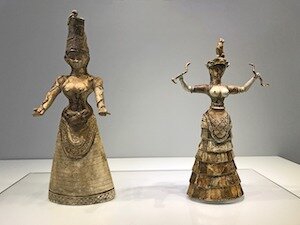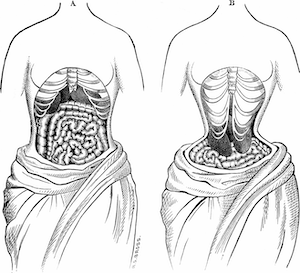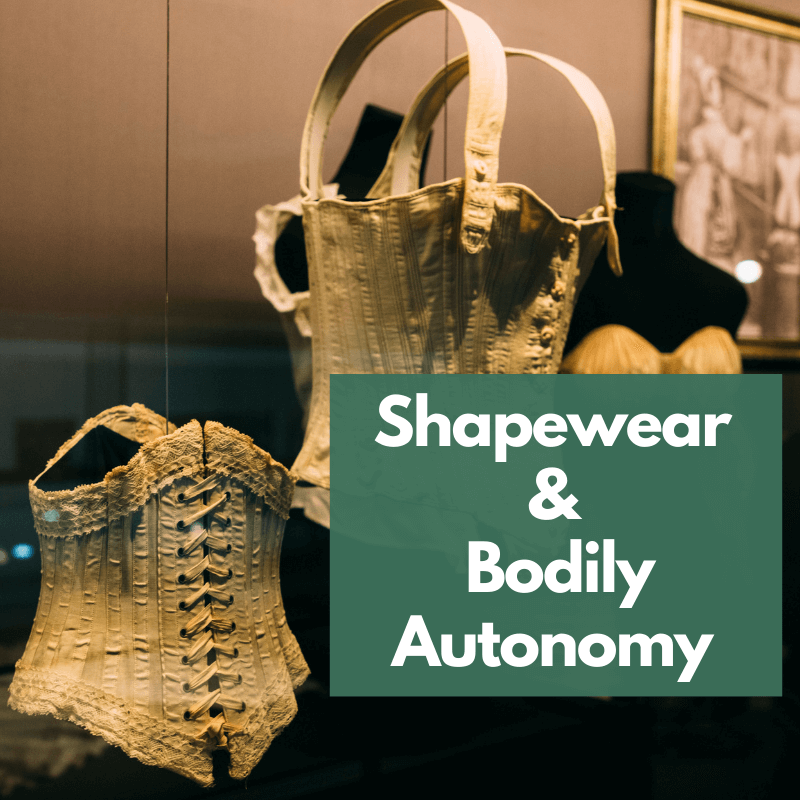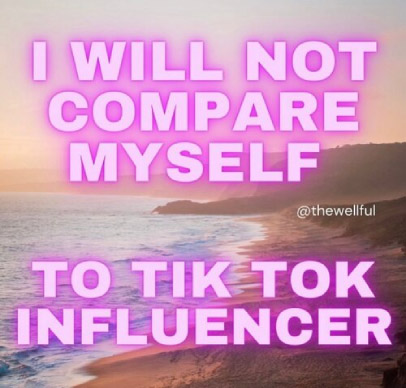After watching the highly praised Netflix Series, Bridgerton, I noticed a new trend on my social media feeds. Corsets. Many popular influencers have now been sporting these shapewear pieces in a sort of homage to the young ladies in the series who were among the most fashionable in London at the time.
If you’re like me, you just finished binge-watching Bridgerton and can’t get enough of the glamorous lifestyle of each character. The young ladies are in pursuit of finding a husband, and so they work hard to ensure their attractiveness. Some characters work on their piano skills, others on just the right dress. Though the show is fictional, it has me wondering how much we find ourselves trying to shape and conform our own bodies and lives in the pursuit of acceptance and love. My question is, are things like shapewear and bodily autonomy mutually exclusive?
Seeing this had me thinking, where did the idea of “shaping” our bodies even come from?
Origins of Corsets and Shapewear
Garmets to manipulate the body into a ‘more desired shape’ is not a new idea…( and it has not always been for just women!) The oldest known shapewear came in the form of leather belts worn by Minoans around 1300 to 1450 B.C. Minoan artwork suggests that women wore these pieces to achieve a small waist while emphasizing their breasts and hips.

Image: Crete Museum
Shapewear was recorded throughout the 15th and 16th centuries. The first true corsets were reported in Europe in an effort to mold women’s bodies to create a small waist and later into the “hourglass” shape.
Corsets and Classism
As the garment evolved in materials from stiff paste, to metals, to linen reinforced with whale bones, so did the wearer. The elaborate corset of the 18th century became synonymous with the upper class, the aristocracy. Only in the mid 19th century when the sewing machine was invented were women of lower classes able to create their own at home.


Though shapewear pieces have been used for a multitude of reasons such as straight posture, spinal diseases (a potential reason for the clear corsetry deformation in this 19th century male skeleton uncovered in Britain) or breast support, the “ideal hourglass figure” remains the most consistent use of these garments.
So, what about modern-day “shapewear”?
Evolving over the 1900s-2010’s the shapewear industry has developed modern versions of the corset, from “shaping briefs” AKA Spanx, and the waist trainer. And these pieces have been particularly popular due to their association with uber-famous celebrities and social media influencers.

Does the pursuit of the “ideal body” come at a cost though? Physicians since the 1790’s have been warning of the use of too-tight clothing. Samuel Thomas von Sömmering, a physician and anatomist, wrote about the dangers of rib and internal organ compression with the practice of “tight lacing” a corset. He was the first to speculate about the potential for this practice to lead to serious disease such as tuberculosis and other ailments like hiatus hernias. Other experts believe this clothing apparatus leads to poor breathing, digestion and potential atrophy of back muscles, causing long term reliance on the corset.

“PD-US – Fig. 11. A, the natural position of internal organs. B, when deformd by tight lacing. In this way the liver and the stomach have been forced downward, as seen in the cut. NEW PATHFINDER NO. 2; PHYSIOLOGY FOR YOUNG PEOPLE ADAPTED TO INTERMEDIATE CLASSES AND COMMEN SCHOOLS. page 84” )
Health Implications of Shapewear
While most shapewear sold today (in the form of undergarments such as Spanx) is tight yet stretchy and won’t necessarily cause bone deformation, doctors still advise caution when wearing them.
Hepatologist, Dr. Jamile Wakim-Fleming, wrote about the potential complications of these garments:
Skin irritation (from wearing them too long or an allergy from the material)
Too tight (if the garment is too tight, it could constrict blood flow to the legs and cause numbness or tingling)
Disruption of the digestive system (acid reflux, excessive gas and bloating may occur)
And in women 50+ years of age may experience a pelvic floor prolapse
Dr. Wakim-Fleming says, a general rule of thumb for these pieces is “if it makes a mark, it’s too tight.”

What about your personal choices around shapewear?
At the end of the day, you have a right to your bodily autonomy. Choosing clothing for it’s style, shape, comfort, etc. is absolutely your choice and you should not feel pressured to conform to any extreme if you do not choose to.
If you wear shapewear pieces on a daily basis, I see you.
If you wear shapewear pieces for special occasions, I see you.
If you have suffered from any ailment because of shapewear pieces, I see you.
If you choose not to ever wear shapewear, I see you.
You are worthy, no matter your choice in clothing, food, movement, anything.
This article was written by Dietetic Intern, Brittany Hill. Brittany is a current dietetic student at Keiser University. She graduated from University of Central Florida with a bachelor’s degree in human communication. She would like to combine the two degrees in her career to offer care in a Health at Every Size (HAES), Intuitive Eating, and body liberation lens. Her goal is to help others find freedom around food, cooking, movement and body image.
In her free time, Brittany loves to bike on trails around town, paint, sing karaoke with her boyfriend and spend time with family and her pets (a very cute pitbull-mix and a handsome bearded dragon).
Looking for support around body image, intuitive eating and making peace with food? Book a discovery call to learn more about our individual and group coaching programs.











